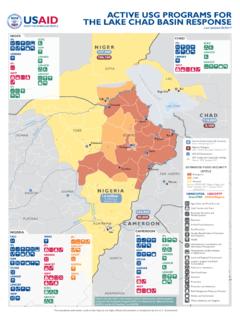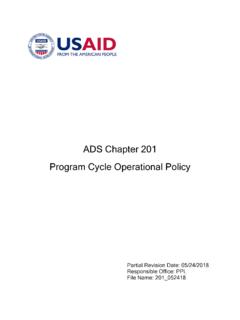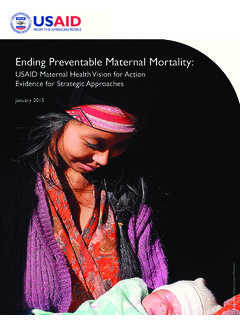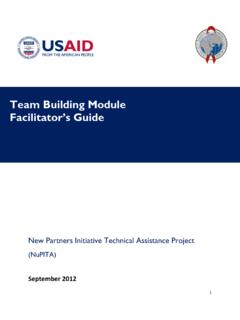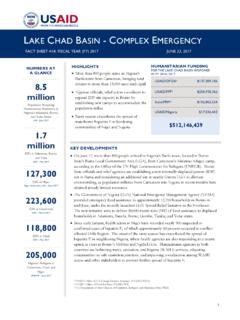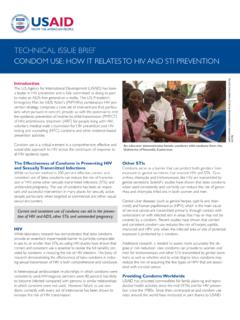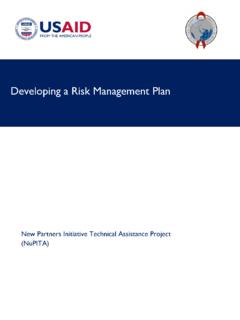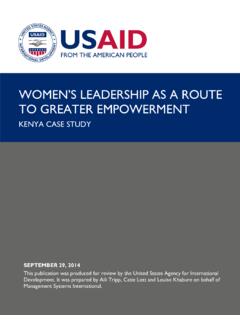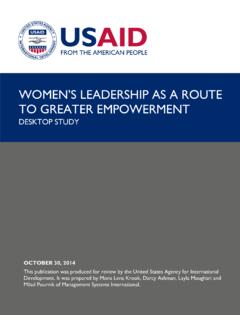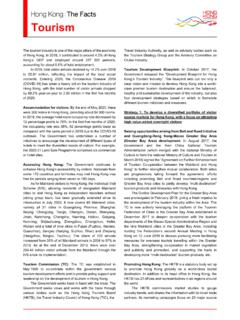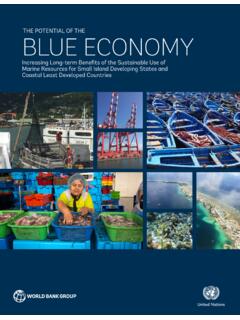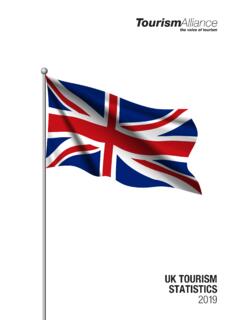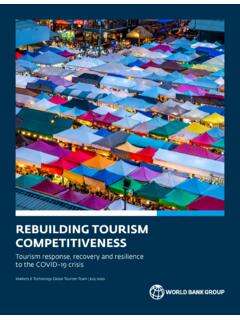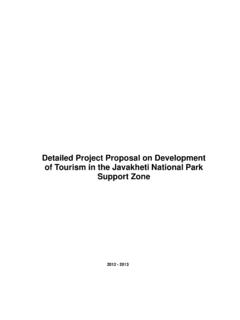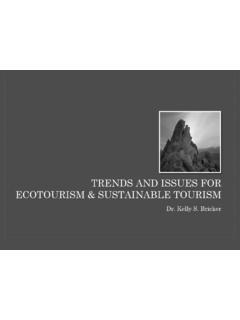Transcription of Tourism Destination Management - United States Agency …
1 GSTA. Global Sustainable Tourism Alliance Tourism Destination . Management . ACHIEVING SUSTAINABLE AND. COMPETITIVE RESULTS. 3. Sustainable Tourism : International Cooperation for Development O N L I N E TO O L K I T A N D R E S O U R C E S E R I E S. Sustainable Tourism : International Cooperation for Development ON L IN E TO O L K IT AND RE S O U RCE S E RIE S. ST101. Global Tourism Achieving Sustainable Goals ST102. Project Development for Sustainable Tourism A Step by Step Approach ST103. Tourism Destination Management Achieving Sustainable and Competitive Results ST104. Tourism Investment and Finance Accessing Sustainable Funding and Social Impact Capital ST105. Sustainable Tourism Enterprise Development A Business Planning Approach ST106.
2 Tourism Workforce Development A Guide to Assessing and Designing Programs ST107. Tourism and Conservation Sustainable Models and Strategies ST108. Scientific, Academic, Volunteer, and Educational Travel Connecting Responsible Travelers with Sustainable destinations ST109. Powering Tourism Electrification and Efficiency Options for Rural Tourism Facilities GSTA. Global Sustainable Tourism Alliance Tourism Destination . Management . ACHIEVING SUSTAINABLE AND. COMPETITIVE RESULTS. Sustainable Tourism : International Cooperation for Development ON L I NE TO O L K I T AN D R ES O U R CE S ER I ES. Primary Authors Jennifer Stange David Brown Solimar International Contributors Roberta Hilbruner, USAID.
3 Donald E. Hawkins, George Washington University This publication is made possible by the support of the American People through the United States Agency for International Development to the Global Sustainable Tourism Alliance cooperative agreement #EPP-A-00-06-00002-00. The contents of this publication are the sole responsibility of the author(s) and do not necessarily reflect the views of USAID or the United States Government. TABLE OF CONTENTS. Preface .. 2 A Few Confusing Terms .. 4 Unit 1: Ensuring a Sustainable Form of 8 Unit 2: Tourism Inventory, Vision, and Goal 23 Unit 3: Auditing the Visitor and Resident Experience .. 47 Unit 4: Utilize Clusters to Gain a Competitive Edge .. 62 Unit 5: Establishing Destination Management Organizational 68 Unit 6: Developing Destination Marketing & Positioning Strategies.
4 81 Unit 7: Building the Destination 's Online 104 Unit 8: Developing a Visitor Information 127 References .. 134 Glossary .. 137 In accordance with Title 17 section 107, any copyrighted material herein is distributed without profit or payment for non-profit research and educational purposes only. If you wish to use copyrighted materials from this publication for purposes of your own that go beyond fair use, you must obtain permission from the copyright owner. International Institute for Tourism Studies The George Washington University 2201 G Street, NW. Washington, DC 20052 Tourism Destination Management 1. Preface People travel for a variety of reasons: to escape, explore, understand, and participate.
5 But at the core of the experience lies the Destination the place that hands something to the traveler to keep forever and share with others. This toolkit helps destinations put in place strategies and programs that will best tell their unique story and become an inviting host for visitors no matter the purpose of their journey. Destination Management organizations (DMO) are often the only advocates for a holistic Tourism industry in a place; and in this role they ensure the mitigation of Tourism 's negative impacts to the environment and local communities as well as the sharing of opportunities for a vibrant exchange of people. In fact, a DMO may best serve to facilitate dialogue among the private sector, public sector, and other stakeholders that may otherwise never collaborate or understand how their decisions reverberate down a Destination 's long Tourism value chain.
6 Because of this unique capability, DMOs prove invaluable for supporting Tourism development, especially in developing destinations where Tourism is an important economic driver and mechanism for equitable social capacity building. Developing a DMO iteratively relies on identifying and redefining a Destination vision through collaboration. The pages that follow outline how to build a successful DMO to increase visitation while preserving a Destination 's assets. Every Destination is different, however, so no one volume could ever be a complete resource. The information within hopefully guides the reader to explore more deeply additional interests and seek out examples of innovation by other organizations around the world.
7 The processes, examples, and tools have been adapted from several years of expertise in the field by Tourism professionals. We would like to thank those individuals who without their diligent work and insight this toolkit would not be possible: James Dion, Shawndra Herry, Matt Humke, Simon Jones, Eric Lin, Juan Luna Kelser, Hamilton McNutt, Jennifer Park, Chris Seek, Natalie Sellier, Ashley Silver, and Jonathan Tourtellot. Drs. Don Hawkins and Kristin Lamoureux of The George Washington University are responsible for the education of hundreds of successful individuals both in the classroom and out. We are both sincerely thankful to be their students and look forward for every new chance to learn from them.
8 We'd also like to thank Roberta Hilbruner, whose unparalleled championing of sustainable Tourism has improved numerous destinations and people throughout the world. Tourism Destination Management 2. The Global Sustainable Tourism Alliance Management partners FHI360, The George Washington University, Solimar International, and The Nature Conservancy . provided helpful guidance. We also acknowledge major contributions by the following persons: Annessa Kaufman for overall coordination of the online programming, Tania Segura for technical assistance and Jon Kohl for editorial services. We also express our appreciation to the World Tourism Organization and its Themis Foundation for permission to utilize information from their publications and to pilot test this publication.
9 And finally, we would like to remember the contributions of Photo from Chrystel Cancel, whose life the Haiti Earthquake of 2010. suddenly took from us while pursuing her passion of sustainable Tourism development. Her talent in engaging and emboldening local people to preserve their place can be seen throughout our many references to the Bocas Sustainable Tourism Alliance in Panama, which she led from its inception. The target audience for this manual includes professionals working on Tourism -related projects in developing countries , including staff from donor and government agencies, NGOs, consulting firms, universities, businesses, and related entities. We hope this publication is a useful resource for the reader no matter the purpose of the journey.
10 With enthusiasm and gratitude, David C. Brown & Jennifer Stange Tourism Destination Management 3. A Few Confusing Terms There are a few terms and concepts that often haunt the Tourism literature. Here we present several to avoid confusion. Their definitions and support material come from the World Heritage Center (2007). Destination AND SITES. The market ultimately decides the boundaries of a Destination , influenced by marketing, as well as physical and cultural limits. Thus the market may perceive an entire country as a Destination (as marketed by a Tourism ministry) or a single national park, such as Iguazu National Park in Argentina. The term site overlaps significantly with Destination but tends to center on a particular place bound by physical or cultural characteristics.
